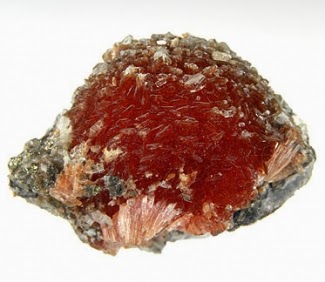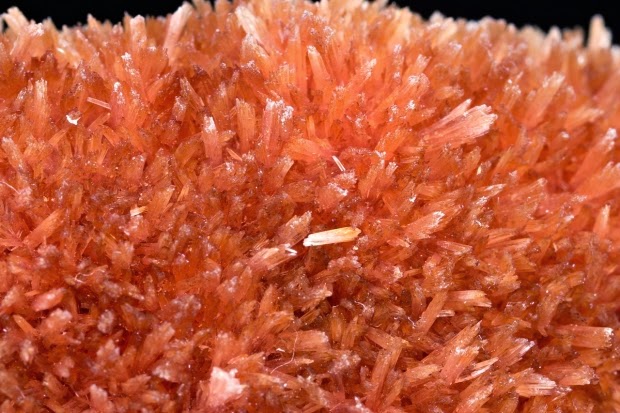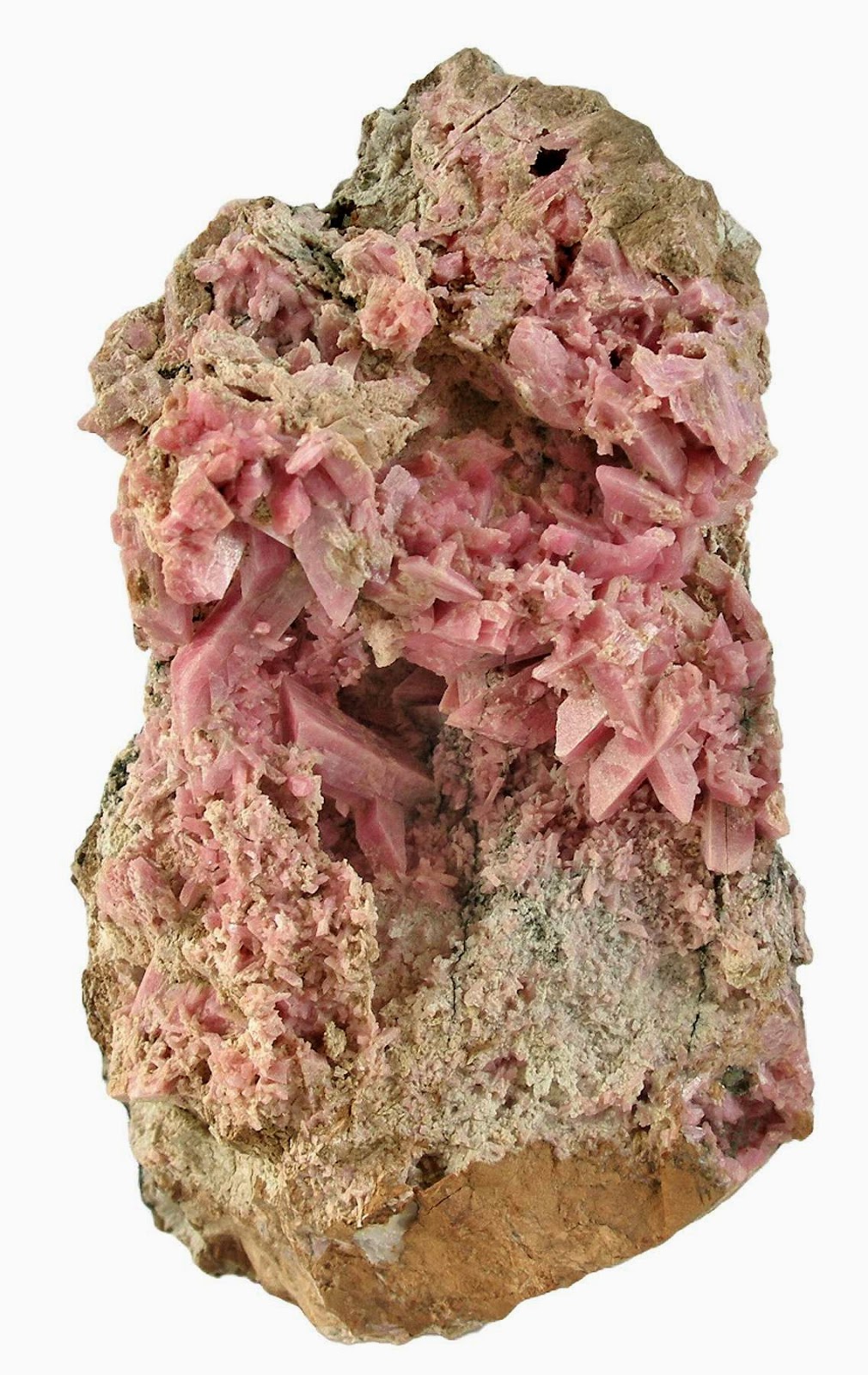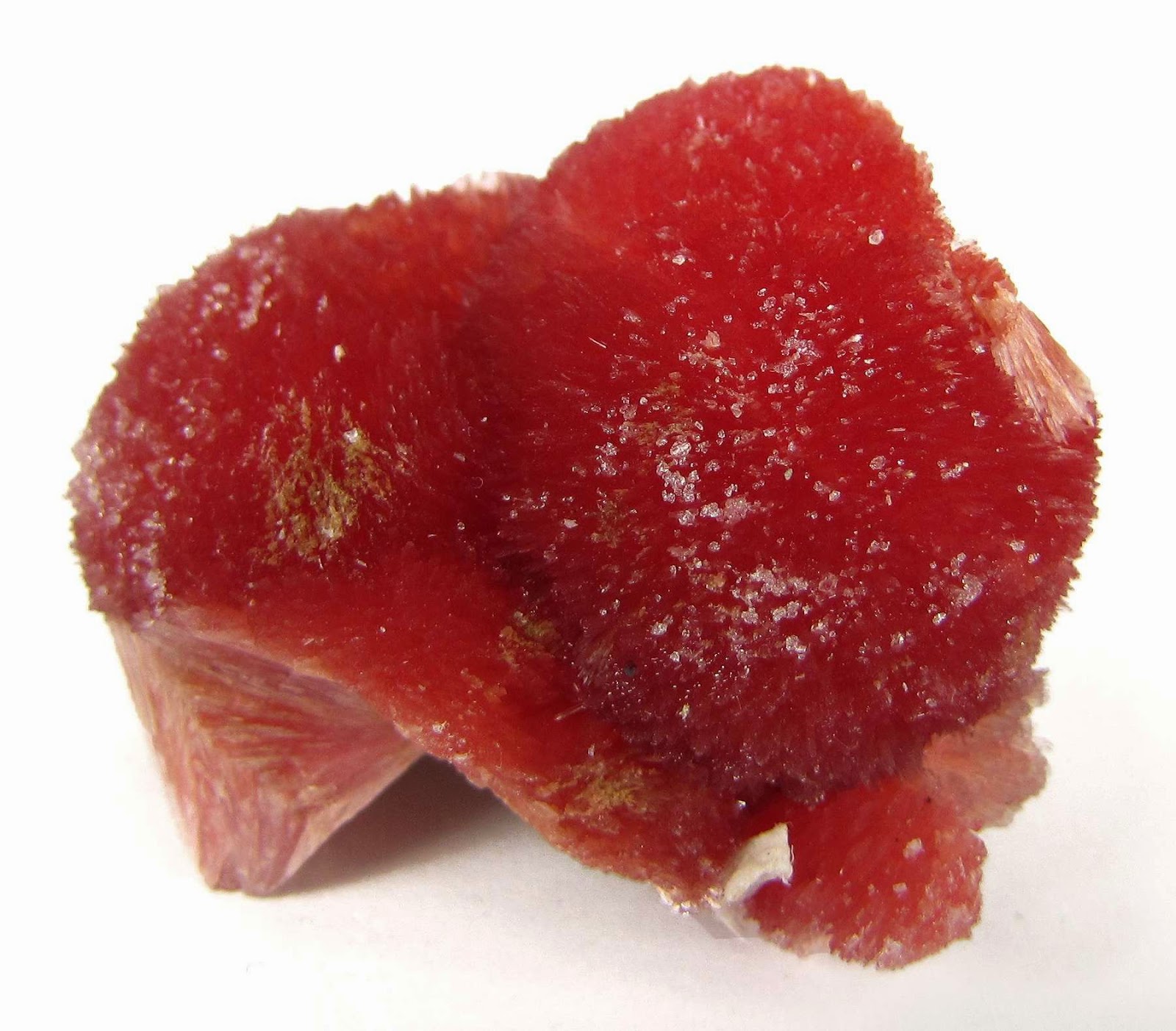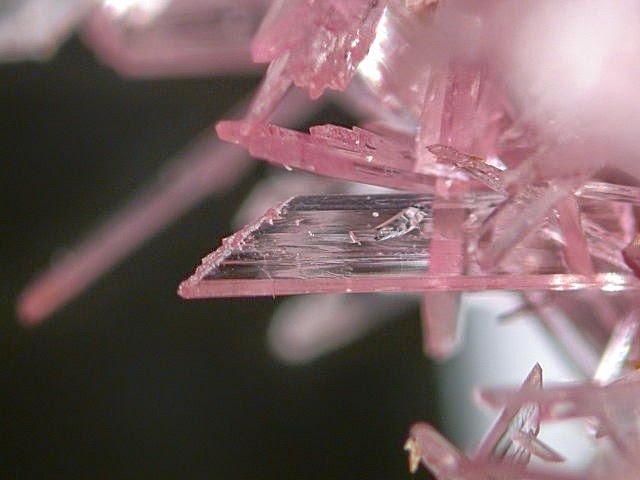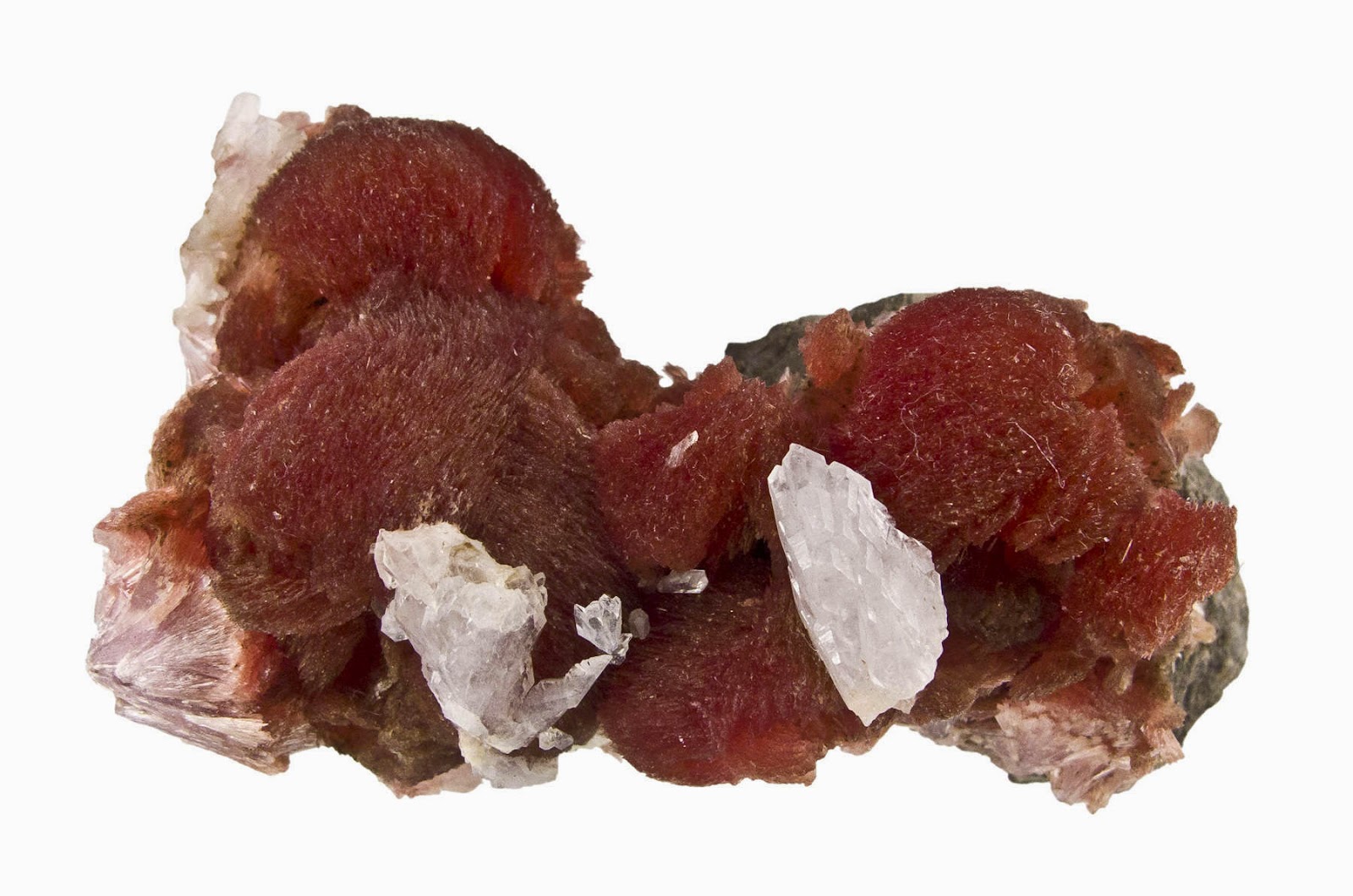
Chemical Formula: Ca2(Mn,Fe)7Si10O28(OH)2·5H2O
Locality: Banska Stiavnica, Czechoslovakia.
Name Origin: From the Greek ines – “flesh fibers.”
Inesite is not a common mineral in rock shops and in mineral displays. However it can form attractive pink or rose colored specimens that are sought after by mineral collectors. The commonly seen prismatic crystals have a slanted or “chisel-shaped” termination. At first glance the shorter crystals may be mistaken for rhombohedrons which have six equally slanted faces. Inesite will show only one steeply slanted face, while the other faces have a much less inclined slant. This is important for identification because the pink to rose colored mineral rhodochrosite forms rhombohedrons. Another similar looking mineral is the silicate rhodonite. Fortunately rhodonite lacks any steeply inclined faces and is normally blocky, not prismatic.
Physical Properties
Cleavage: {010} Perfect, {100} Good
Color: Brown, Brown, Pink, Orange.
Density: 3.029 – 3.1, Average = 3.06
Diaphaneity: Translucent
Fracture: Brittle – Uneven – Very brittle fracture producing uneven fragments.
Hardness: 6 – Orthoclase
Luminescence: Non-fluorescent.
Luster: Vitreous (Glassy)
Streak: white
Photos:
